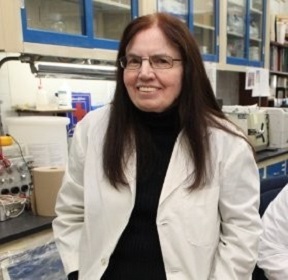Speakers
Ghada Amaireh
University of Birmingham United KingdomTitle: How effective is deep brain stimulation targeting of the globus pallidum as a therapeutic site for the reduction of Tics in patients with gilles de la tourette's syndrome
Abstract:
Background: Giles de la Tourette syndrome (GTS) is a classified neurodevelopmental motor disorder that manifests in involuntary movement. Early onset symptoms of GTS present inventory movement known as tics. The causes of GTS syndrome are thought to be associated with the globus pallidus which is associated with involuntary and voluntary movements. There are a variety of treatment options available ranging from psychopharmacological interventions to psychological therapy to help manage symptoms of Giles de la Tourette syndrome. In severe cases neurosurgical intervention known as Deep brain stimulation is required to manage and eliminate tics . Previously Thalamic sites were targets for DBS. New evidence indicates that the GP is an effective site for DBS when treating GTS.
Search methods and choice criteria: PRISMA guidelines were used to structure and conducted this systematic review. A variety of data bases were used to obtain relevant research papers, these included: PubMed , Science Direct , Medline & google scholar. This Is a systematic review which aims to critically appraise evidences examining the effectiveness of DBS targeting of the GP in reducing tic severity , in GTS in comparison to thalamic sites.
Authors conclusions : The GP is an effective target for DBS when treating GTS,it reduces tic severity . improves quality of life and has fewer side effects than Thalamic targets.
Biography:
Ghada Saleem Amaireh has completed her undergraduate studies in Psychology with Clinical psychology at the University of Lincoln. She has Also completed a Masters of Science in Clinical Neuropsychitry at the University of Birmingham Medical School. At the age of 24 she was accepted into a PhD studentship examining brain-to-brain sychnrony at the University of Nottingham set to start December 2021.
Patricia A Broderick
Univerity of New York School of Medicine USATitle: The electroactive signal for the tau peptide: neuromolecular imaging (nmi): a live nanotechnology for alzheimer, parkinson and epilepsy disease
Abstract:
The Tau gene and its reported six Tau isoforms are known to be present in the brain of Alzheimer’s patients, When we attempt to discern Parkinson disease, Lewy Body Dementia and Alzheimer disease including other neurodegenerative disorders of asynchrony similar to epileptogenic seizures, we are met with a huge question mark as to both diagnose and treat because the central distinctions among these dreaded diseases are beset with confusing guidelines. To this point, previous post mortem studies have assayed Lewy Bodies, alpha synuclein, the amyloid precursor proteins and Tau but the limitations of “life after death” (post mortem) may simply add to mis-diagnoses. There is a need to cure the dementia of tauopathies! The BRODERICK PROBE® series of biosensors work by electrochemical detection and are comprised of carbon and/or carbon allotropes in one example and fiber optic proteins in another of the many examples. In the present study, the original carbon sensors, the carbon/lipid/phosphotidyl polymers were used to neuromolecular image Tau LIVE. The nanoprobe is unique from others as it is so tiny that it can be used anywhere and for any length of time; the operationally stable biomedical biosensors/nanoprobes do not cause gliosis (scar tissue) nor do they produce infection (bacterial growth). The results show that the nanoprobe acts to image Tau through mechanisms of phosphorylation. The LIVE electroactive image for Tau in the precise striatal basal neurons of the living Parkinson subject is actually seen here, online and within seconds likely as a metal complex, phosphorylated in a Parkinson subject. Thus, the elusive nature of Tau is further elucidated as a dynamic redox reaction occuring LIVE in the brain of the living Tau patient and animal via the BRODERICK PROBE®. Accepted as Clinical Paper/Technical Report by MedCrave (Case Reports Journal), April, 2021.
Biography:
Patricia A. Broderick has completed her PhD from St John’s University, Queens, NY, USA and her postdoctoral studies from The Albert Einstein Medical Center, Bronx, NY, USA and Cornell University Medical School, White Plains, NY, USA. Patricia serves as Tenured and Full Medical Professor in the Dept. of Molecular, Cellular and Biomedical Sciences at the City University of New York School of Medicine and as Director of the Neurobiology Course at the Sophie Davis School of Biomedical Education, CUNY School of Medicine, CCNY. A highly recognized expert and prominent editor, author, inventor and lecturer, Patricia has published more than 500 papers in reputed journals and sought after books and she serves as an editorial board member of repute worldwide. Dr. Broderick holds several patents and trademarks and is the Founder and CEO of Eazysense Nanotechnologies Inc.and the Broderick Brain Foundation.


